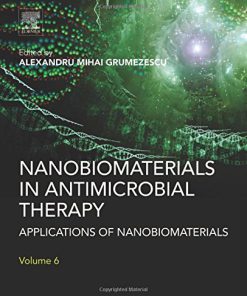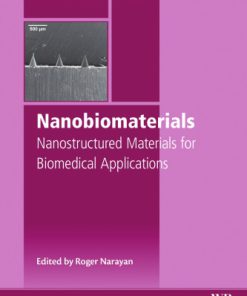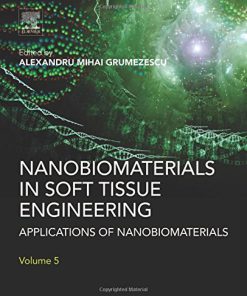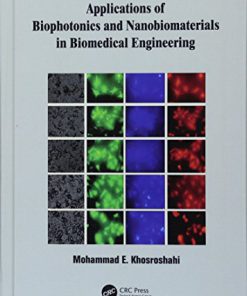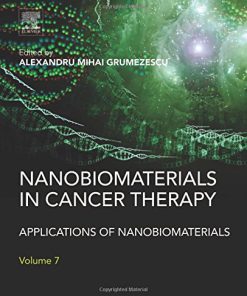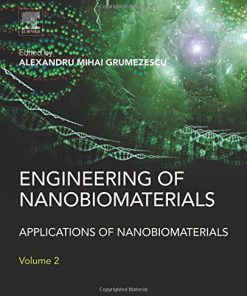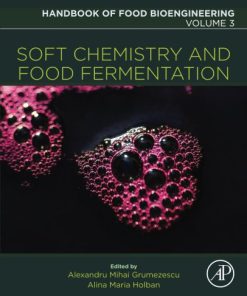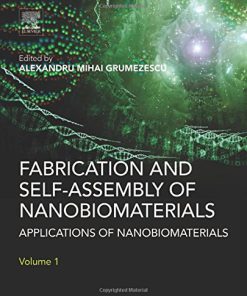Surface Chemistry of Nanobiomaterials Applications of Nanobiomaterials Volume 3 1st Edition by Alexandru Grumezescu ISBN 9780323428613 0323428614
$50.00 Original price was: $50.00.$25.00Current price is: $25.00.
Surface Chemistry of Nanobiomaterials. Applications of Nanobiomaterials Volume 3 1st Edition by Alexandru Grumezescu – Ebook PDF Instant Download/Delivery: 9780323428613, 0323428614
Full download Surface Chemistry of Nanobiomaterials. Applications of Nanobiomaterials Volume 3 1st Edition after payment
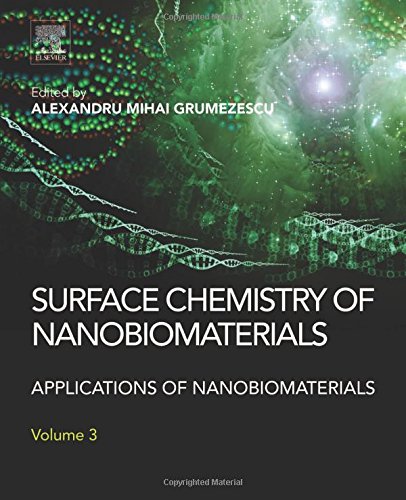
Product details:
ISBN 10: 0323428614
ISBN 13: 9780323428613
Author: Alexandru Grumezescu
Surface Chemistry of Nanobiomaterials brings together the most recent findings regarding the surface modification of currently used nanomaterials, which is a field that has become increasingly important during the last decade. This book enables the results of current research to reach those who wish to use this knowledge in an applied setting.
Leading researchers from around the world present various types of nanobiomaterials, such as quantum dots (QDs), carbon nanotubes, silver nanoparticles, copper oxide, zinc oxide, magnesium oxide, magnetite, hydroxyapatite and graphene, and discuss their related functionalization strategies.
This book will be of interest to postdoctoral researchers, professors and students engaged in the fields of materials science, biotechnology and applied chemistry. It will also be highly valuable to those working in industry, including pharmaceutics and biotechnology companies, medical researchers, biomedical engineers and advanced clinicians.
Table of contents:
Chapter 1. Surface functionalized hybrid nanomaterials: Implications in biosensing and therapeutics
Abstract
1.1 Introduction
1.2 Surface Functionalization
1.3 Applications in the Biomedical Field
1.4 Conclusions
References
Chapter 2. Microbial toxicity of different functional groups-treated carbon nanotubes
Abstract
2.1 Introduction
2.2 Methods of Functionalization
2.3 Antimicrobial Activity
2.4 Conclusions
Acknowledgments
References
Chapter 3. Making the hospital a safer place by the sonochemical coating of textiles by antibacterial nanoparticles
Abstract
3.1 Introduction
3.2 Application of Nanotechnology for “Smart” Textiles
3.3 A Sonochemical Method for the Synthesis of Nanostructured Materials and Their Adherence to Solid Substrates
3.4 Ultrasound-Assisted Deposition of Metal Nanooxides on Textiles and Their Antibacterial Properties
3.5 The Sonochemical Coating of Cotton Withstands 65 Washing Cycles at Hospital Washing Standards and Retains Its Antibacterial Properties
3.6 Making the Hospital a Safer Place by Sonochemical Coating of All Its Textiles with Antibacterial Nanoparticles
3.7 Conclusions
References
Chapter 4. Nano-microporous structured surfaces prepared by the breath figures approach and their biorelated applications
Abstract
4.1 Introduction
4.2 Breath Figures as a Methodology to Obtain Pores with Well-Defined Characteristics
4.3 Topographical and Chemical Modifications of the Pores
4.4 Biorelated Applications of Nano-Microporous Films
4.5 Conclusions
Acknowledgments
References
Chapter 5. Surface chemistry of nanobiomaterials with antimicrobial activity
Abstract
5.1 Introduction
5.2 Antiadhesive Surfaces
5.3 Conclusions
Acknowledgments
References
Chapter 6. Nanotechnology from particle size reduction to enhancing aqueous solubility
Abstract
6.1 Introduction
6.2 Branches of Nanotechnology
6.3 Nanotechnology-Based Drug Delivery Systems
6.4 Drug Solubility
6.5 Stability Aspect
6.6 Processes of Production of Nanoparticles
6.7 Pharmaceutical and Drug Delivery Applications of Nanoparticles
6.8 FDA Regulations
6.9 Conclusions
References
Chapter 7. Formation of biomimetic hydroxyapatite coatings on the surface of titanium and Ti-containing alloys: Ti–6Al–4V and Ti–Zr–Nb
Abstract
7.1 Introduction
7.2 HA Deposition on Titanium Surface, Modified by SiOH, COOH, and TiOH Functional Groups: Findings for the Optimal Experiment Conditions
7.3 Influence of the Temperature and SBF Composition (Tas-SBF and 10×-SBF) on the Biomimetic HA Deposition on the Titanium Surface
7.4 HA-Coating in 10×SBF
7.5 HA-Coating in Tas-SBF
7.6 Conclusions
References
Chapter 8. Interaction between nanoparticles and cell membrane
Abstract
8.1 A Short Introduction
8.2 Current Status
8.3 Interactions between Liposomes and Nanomaterials
8.4 Conclusions
References
Chapter 9. Antimicrobial studies of metal and metal oxide nanoparticles
Abstract
9.1 Introduction
9.2 Antimicrobial Studies of Silver Nanostructured Materials
9.3 Antibacterial Studies of Gold (Au) Nanostructured Materials
9.4 Antibacterial Studies of Copper (Cu) Nanostructured Materials
9.5 Antibacterial Studies of Other Metal Oxide Nanostructured Materials
9.6 The Mechanism of Metal and Metal Oxide Antibacterial Activity
9.7 Conclusions
Acknowledgments
References
Chapter 10. Inorganic nanoarchitectonics designed for drug delivery and anti-infective surfaces
Abstract
10.1 Introduction
10.2 Nanoarchitectonics with Biological Applications
10.3 Antimicrobial Inorganic Coatings for Medical Devices
10.4 Conclusions
References
Chapter 11. The chemistry of magnetosomes
Abstract
11.1 Introduction
11.2 Ultrastructure of Magnetosomes
11.3 The Magnetosome Membrane
11.4 The Inorganic Core
11.5 Magnets in Higher Organisms
11.6 Current Status
11.7 Future Prospects
11.8 Conclusions
References
Chapter 12. Nanomaterials and natural products for UV-photoprotection
Abstract
12.1 Introduction
12.2 Polyphenols
12.3 Carotenoids
12.4 Xanthines
12.5 Steroids
12.6 Mycosporines and Mycosporine-Like Amino Acids
12.7 Vitamin E
12.8 Conclusions
References
Chapter 13. Progress in graphene-based optical and electrochemical aptasensors
Abstract
13.1 Introduction
13.2 Optical Graphene Aptasensors
13.3 Electrochemical Graphene-Based Aptasensors
13.4 Conclusions
Acknowledgments
References
Chapter 14. Improved oral bioavailability of bioactives through lipid-based nanoarchitectures
Abstract
14.1 Introduction
14.2 Anatomical and Physiological Features of Gastrointestinal Tract
14.3 Lipid-Based Nanocarriers in Overcoming the Challenges to Oral Drug Delivery
14.4 Pharmacokinetics of Orally Administered Nanocarriers
14.5 Regulatory Aspects
14.6 Concluding Remarks and Future Prospects
References
Chapter 15. Scientometric overview regarding the surface chemistry of nanobiomaterials
Abstract
15.1 Overview
15.2 Surface Plasmons and Nanobiomaterials
15.3 Surface Chemistry of Nanobiomaterials
15.4 Conclusions
References
People also search for:
surface chemistry of nanomaterials
surface coordination chemistry of metal nanomaterials
what are the chemical properties of nanomaterials
surface properties of nanomaterials
what is surface in chemistry
Tags: Alexandru Grumezescu, Surface Chemistry, Nanobiomaterials, Applications, Nanobiomaterials
You may also like…
Science (General)
Technique - Food Manufacturing





